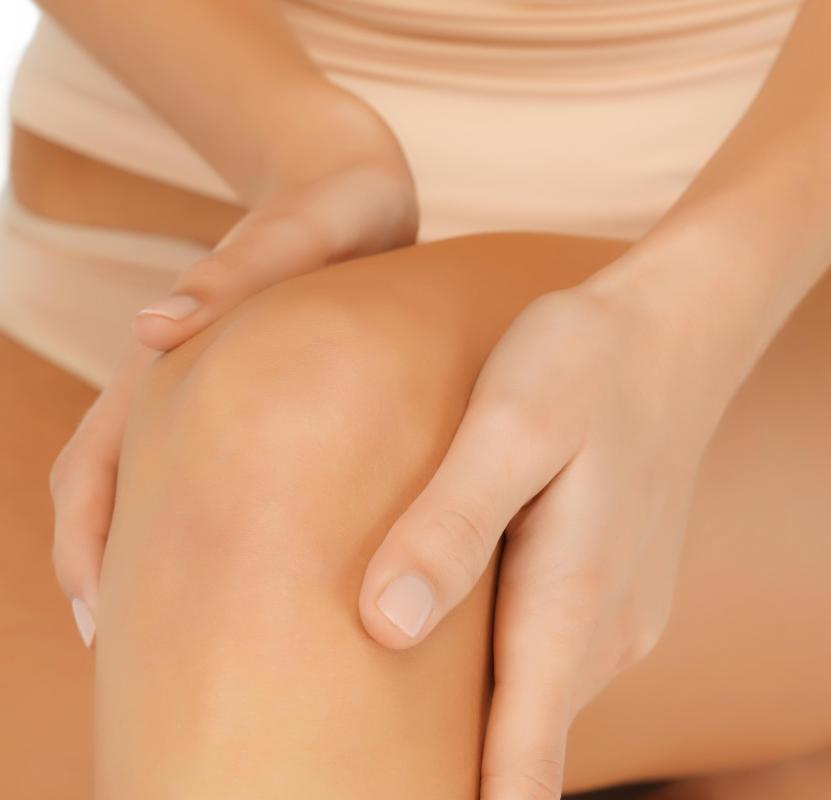At TheHealthBoard, we're committed to delivering accurate, trustworthy information. Our expert-authored content is rigorously fact-checked and sourced from credible authorities. Discover how we uphold the highest standards in providing you with reliable knowledge.
What Causes Peroneal Nerve Damage?
Peroneal nerve damage, where the nerve supplying the lower leg and foot acquires an injury, can be caused by compression, physical trauma, underlying disease, and surgery. In people with this type of injury, the nerve damage limits mobility in the lower leg and foot. This can lead to symptoms like foot drop, where the toes drag on the ground and the patient has trouble flexing. The patient also may experience tingling, numbness, and pain. Treatment options are available to manage the injury and address specific symptoms.
This anatomical structure branches off from the sciatic nerve, a larger nerve supplying the whole leg. The peroneal nerve emerges around the knee, wrapping down the leg to the foot and spreading out across the foot. A patient typically has injuries on one side only, and they may start out with subtle symptoms like slapping or dragging the foot while walking.

Compression of the peroneal nerve may occur because people wear tight boots or other garments, as well as poorly fitted braces and casts. Sometimes compression of the nerve is the result of degeneration in the leg or swelling around the knee. The pressure eats away at the nerve's myelin sheath, making it more difficult to transmit signals. Physical trauma, another source of peroneal nerve damage, can include fractures, crush injuries to the leg, and sharp blows. Sometimes this leads to injuries in the future as a result of buildups of pressure inside the leg.

Underlying diseases including anorexia, diabetes, and congenital conditions known to cause nerve injury can lead to peroneal nerve damage. Patients with these conditions have a higher risk of nerve injury, especially in the lower extremities. A doctor may monitor the patient for early signs and symptoms so interventions can occur as rapidly as possible. Surgical procedures may also expose patients to the risk of peroneal nerve damage. A surgeon may accidentally injure the nerve or could create irritation, leading to scarring, with orthopedic devices like screws.

Some treatment options for peroneal nerve damage include physical therapy and braces to prevent contractures of the foot, pain management for patients experiencing discomfort, and steroids to limit swelling and inflammation. Surgery to remove scarred or damaged sections of the nerve is also available for some patients. Patients may also benefit from occupational therapy to learn how to use the injured leg safely. Canes and assistive devices can help patients who become unstable as a result of poor motor control in the affected leg.
AS FEATURED ON:
AS FEATURED ON:


















Discussion Comments
A little while back, I sprained my ankle and ended up with a compression injury. After the initial injury, I made an appointment to see my doctor. He referred me to a neurologist when he suspected I had nerve damage.
The neurologist put me through a series of nerve conduction tests and gave me the diagnosis of peroneal nerve palsy. The neurologist expects me to make a full recovery and she ruled out any other underlying causes.
I will go back to her every few months for additional nerve conduction tests and to make sure my progress is on track. I have most of my range of motion back, but still experience some tingling and occasional weakness. I am confident I will get better with time.
My uncle was in a car crash and ended up with a peroneal nerve injury. He had some other minor injuries, but the nerve damage has been the injury to cause the longest lasting damage. It got to the point where he could hardly walk because of the way his foot would drag on the injured side.
He has been undergoing physical therapy as well as wearing an orthotic brace. He has been seeing an improvement of the function in his injured leg. Hopefully he will be able to avoid surgery.
His doctor thinks he has a good chance to not have to go under the knife as long as they continue to see improvement.
Post your comments